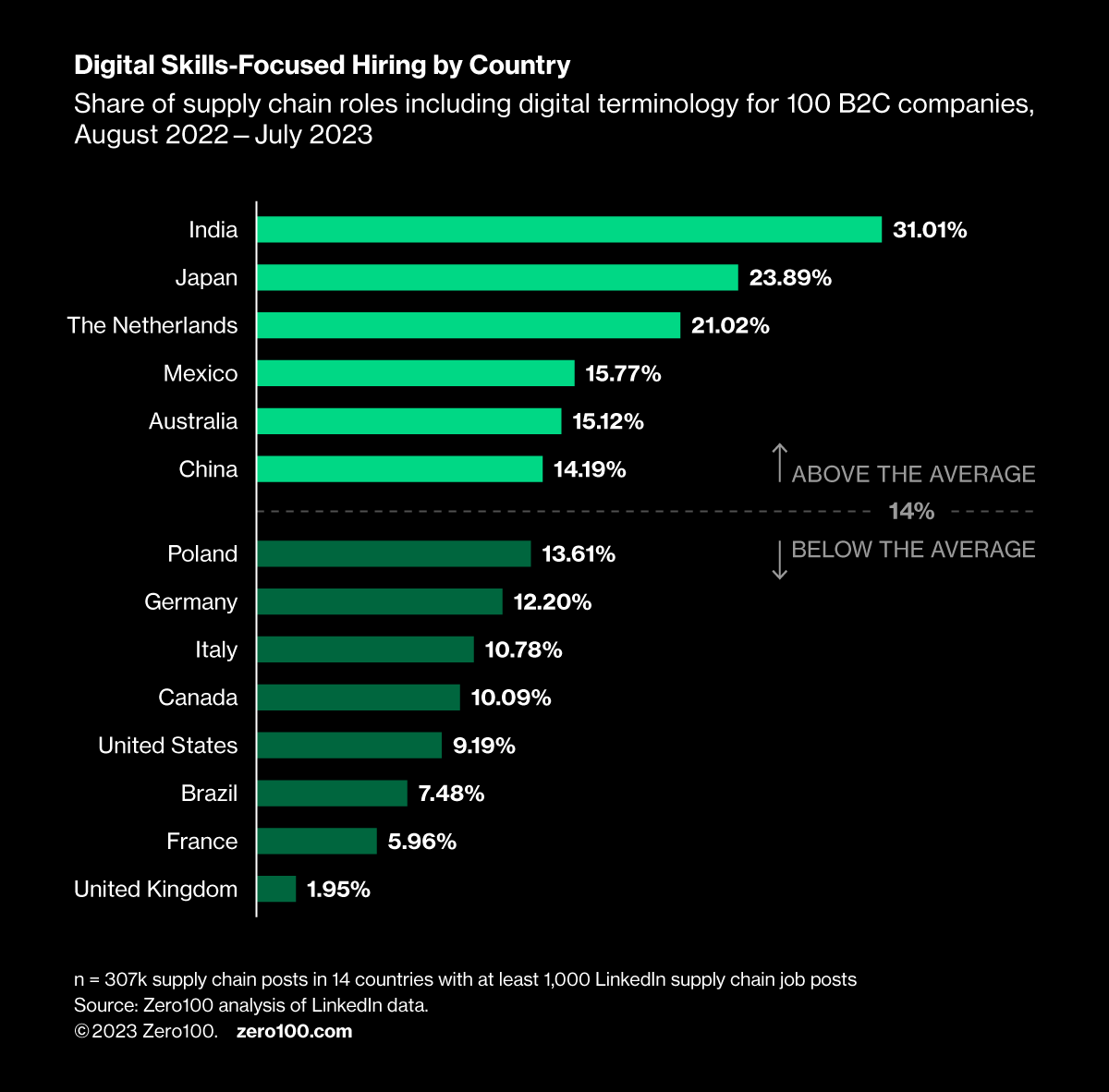

Unlocking Digital Skills in Global B2C Supply Chains
Only 9% of supply chain role descriptions in the US name digital skills as a requirement. Rather than updating job descriptions, B2C companies are looking outside of the US for digitally sophisticated supply chain employees.
Key Takeaways
-
1
Only 9% of supply chain role descriptions in the US name digital skills as a requirement. Rather than updating job descriptions, B2C companies are looking outside of the US for digitally sophisticated supply chain employees.
-
2
India, Japan, and the Netherlands lead when it comes to requiring digital skills for supply chain roles.
-
3
Jobs in Japan are the most likely to require robotics skills (8% of all supply chain roles), six times more than the average of other main recruiting destinations.
Embracing a New Talent Landscape: A Comparative Look Outside the US
As the supply chain profession shifts towards a more digital future, the search for talent to support such changes is on. In February, the British Chambers of Commerce reported that while two-thirds of surveyed firms want to hire, eight out of ten are struggling to find the right workers – skilled or unskilled. Also in February, the US Federal Reserve reported that job openings exceeded available workers by four million. To adapt to the new talent landscape, the UK, US, and EU are looking beyond their borders to countries that have made a concerted effort to cultivate tech skills, including India, Japan, and the Netherlands.

While India has established itself as an early leader in digital talent, Japan has also pushed to the forefront, most notably in the robotics field. Driven in large part by auto manufacturers and Amazon (whose job postings list disproportionally high requirements as compared to other companies), Japan requires robotics skills in nearly one-third of all digital roles. It is a popular place to recruit for robotics skills (8% of supply chain jobs), as well as AI/ML (5%) and analytics (12%). The Netherlands also prioritizes automation in their job listings (7%), with there being a particular focus on this in the food and beverage industry. Supply chain roles on LinkedIn in non-native English-speaking countries may represent a smaller piece of the pie, but it’s clear that companies are recruiting with an eye toward technical proficiency outside the US and the UK. Only 9% of US supply chain roles list digital skills as a requirement, but that’s five times more than UK roles, where mentions of skills in analytics, AI/ML, automation, and robotics are virtually non-existent.
Organizations are – and should – look globally for sophisticated pockets of digital talent, considering those in India, Japan, and the Netherlands. For example, nearly 80% of Unilever’s open supply chain roles in the past year were situated outside of the United States. Half of the company’s roles in India require technical skills and 10% of its open roles in the Netherlands ask for some level of proficiency in automation. Meanwhile, companies with headquarters in India and Japan are looking to the US for digital talent, where an average of 22% of job listings mention digital skills – a higher rate than their listings at home. Taking these findings into account, we can conclude that global hiring strategies should incorporate geographically targeted and technically specific requirements to match digital progress and ambition within a company’s supply chain.
To see a different data cut or to dig deeper into this topic, reach out to our Head of Research Analytics, Cody Stack, at Cody.Stack@zero100.com.
Methodology
Zero100’s proprietary data and analytics are a combined effort between our data scientists and research analysts. We provide data-first insights matched with our own research-backed points of view and bring this analysis to life via real-world case examples being led by supply chain practitioners today.
For this study, we looked at 2.4 million LinkedIn job posts from 100 B2C companies. We limited our analysis to countries with at least 1,000 supply chain job posts on LinkedIn. Our analysis categorizes listings based on mentions of specific digital skills within job titles and descriptions.